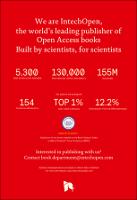Chapter Hyaluronic-Based Antibacterial Hydrogel Coating for Implantable Biomaterials in Orthopedics and Trauma: From Basic Research to Clinical Applications
Author(s)
Gaetano, Giammona
Giuseppe, Pitarresi
Salvatore, Palumbo Fabio
Susanna, Maraldi
Sara, Scarponi
Luca, Romanò Carlo
Language
EnglishAbstract
Bacterial colonization of implanted biomaterials remains one of the most challenging complications in orthopedics and trauma surgery, with extremely high social and economic costs. Antibacterial coating of implants has been advocated by many experts as a possible solution to reduce the burden of implant-related infection and several different solutions have been proposed in the last decades. However, while most of the investigated technologies have shown their efficacy in vitro and/or in vivo, only few were able to reach the market, due to clinical, industrial, economic and regulatory issues. Hyaluronic acid composites have been previously shown to possess antifouling capabilities and have been used in various clinical settings to reduce bacterial adhesion and mitigate biofilm-related infections. Recently, a fast-resorbable, hyaluronic-based hydrogel coating was developed to protect implanted biomaterials in orthopedics, trauma and maxillofacial surgery. Preclinical and clinical testing did show the safety and efficacy of the device that can be intraoperatively loaded with one or more antibiotics and directly applied by the surgeon to the implant surface, at the time of surgery. Here, we review the current evidence concerning this very first antibacterial coating of implants and outline the economic impact of the possible large-scale application of this technology.
Keywords
coating, hydrogel, hyaluronic acid, DAC, infection, implant, orthopedic, trauma, prosthesis, preventionDOI
10.5772/intechopen.73203Publisher
InTechOpenPublisher website
https://www.intechopen.com/Publication date and place
2018Classification
Polymer chemistry


 Download
Download